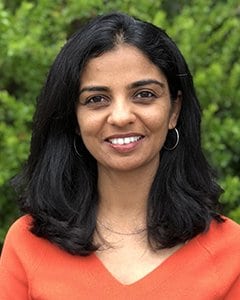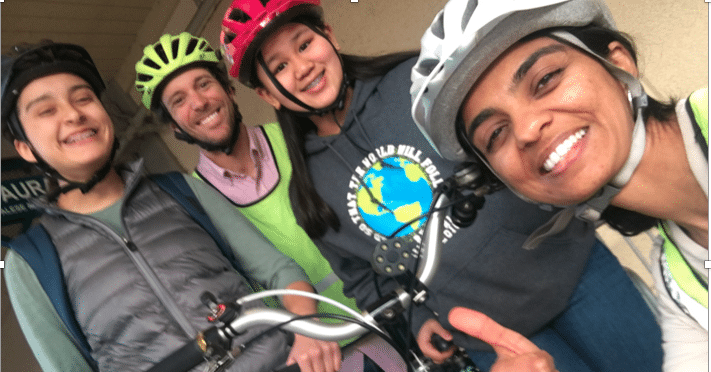Rincon Valley in Santa Rosa is like many neighborhoods throughout the United States. It’s a neighborhood full of children, schools, and childcare, and on any given day, there are approximately 4,000 children being transported via car around the area, from infants to high-schoolers. All this schlepping around Rincon Valley adds up to approximately 12,000 pounds of CO2 per day or 4,380,000 pounds of CO2 per year. ECO2school’s transportation survey shows that the carbon footprint from Maria Carrillo High School’s commute alone is 7,200 lbs of CO2 every day, not to mention the traffic congestion and compromised air quality that comes along with it. All the commuting by car has a significant impact on greenhouse gas emissions in communities all over the country, and perhaps all over the world.
To help address this issue, on November 26th, students at Maria Carrillo High School set out on a community bike ride in Santa Rosa’s Rincon Valley neighborhood.
What exactly is a community bike ride? It’s a group bike ride where ECO2school staff, including an American League of Cycling Certified Instructor (LCI), lead a line of student riders, taking them along a planned route typically ranging 2 to 4 miles for about an hour. At the beginning of the ride we walk through the “ABC” of bike safety, that stands for Air, Brakes, and Crank & Chains and have each rider check these on their bikes. We also orient riders to basic road rules including hand signaling, navigating “STOP” signs and signals, and group riding protocol. The group also stops along the route to answer questions and share observations.
The group biked from the high school to an ice-cream store. Over a delicious chocolate fudge ice-cream, the riders shared how it was to make a left turn on a busy street for the first time. This was a big first step for these students considering it takes even regular riders some practice to depart from a bike lane and confidently own the street!
Some students were already commuting to school via bike on their own. When asked about her ride to school, Cristina Avelar, a junior and an avid bike rider, says, “My ride is almost always enjoyable.” Then she paused to reflect, “Only, on my way back, I am very close to traffic on Montecito Rd.” Her mother is worried, as the bulk of her daughter’s ride happens on two busy arterial streets. However, she knows Cristina also draws from her experience riding regularly with her father.
Beatrice Salvador, a freshman and budding cyclist hasn’t attempted to ride to school alone yet. She has outgrown her old bike and hoping for a new one. In the meantime she wants to hone her street skills and build her confidence by riding with others.
At the end of our community ride, Beatrice said, “The community bike ride was amazing! It felt relaxing because I was able to admire nature that I would usually overlook when in a car. I liked that we were biking as a group because it felt safer for me when making turns, rather than if I were to bike by myself.” Cristina added, “I have had only positive experiences with the community bike rides. They have allowed me to see how to navigate neighborhood streets better, and given me the confidence to ride more safely on my own.”
Transportation research shows that increasing the number of people walking and biking is an effective way to improve safety for pedestrians and bicyclists. So, at ECO2school we wonder what would it take for vast swaths of pedestrians and bikers commuting to school to become the norm – instead of cars. How can we begin to reduce our commute-related carbon impact?
At ECO2school we strive to make solutions come to life by getting kids on their bikes riding with us in their community – a great way to encourage bike riders of all ages to develop their biking and street skills and knowledge, and of course build a huge sense of confidence! We work with youth to foster their leadership on transportation issues and help them connect the dots to climate change, personal and community health, and the design and infrastructure of the communities they live in.


